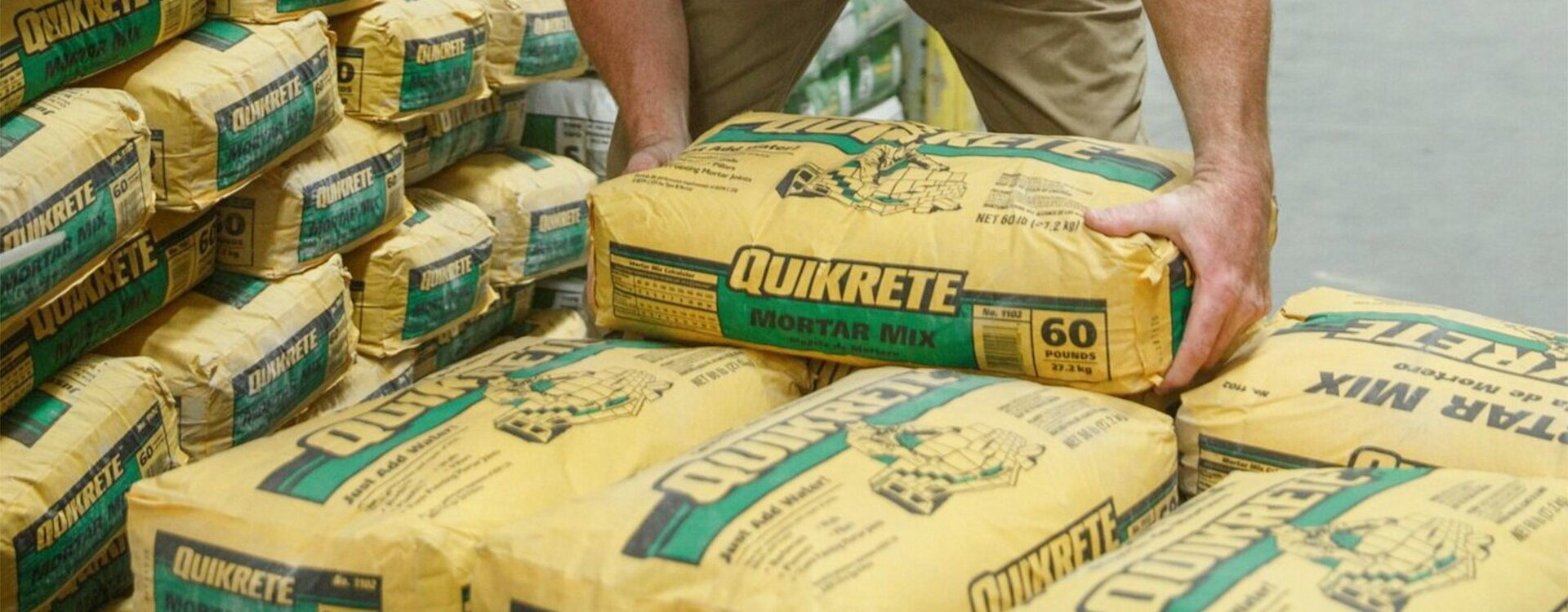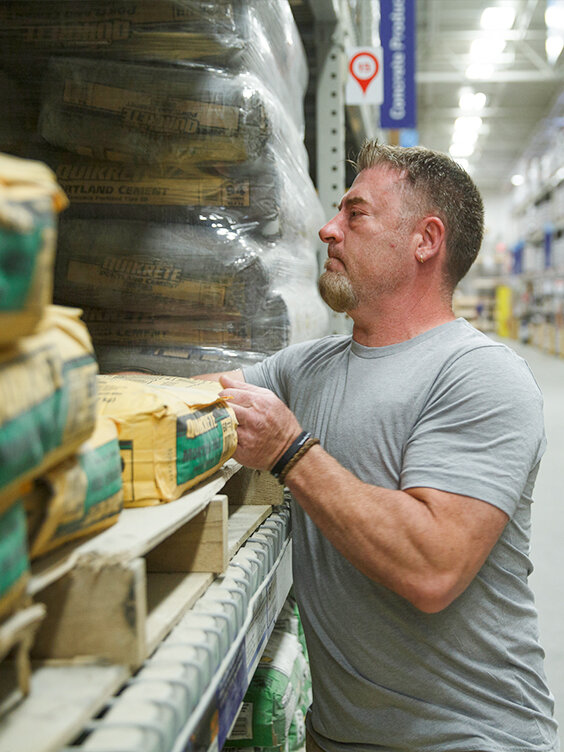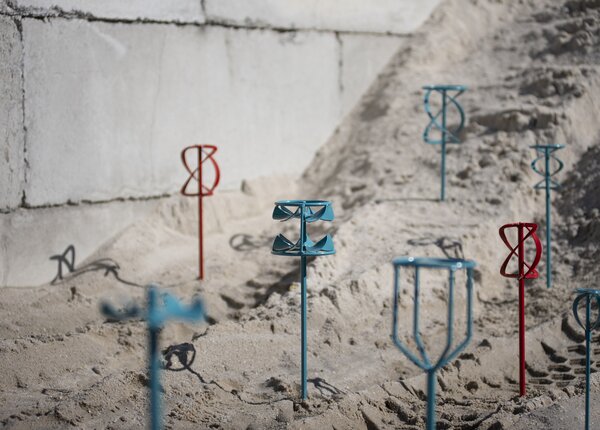
The Benefits of Mixing Properly
Choosing the Right Concrete Mix for Your Project
If you're like many contractors, you know having the right materials for your project often makes the difference between success and failure. One of the top questions is what type of mix you should use to get the best results. Unfortunately, as with many things in life, the answer is that it depends. Specifically, the amount of weight, expected use, direction of stress, and similar concerns will impact the type of concrete mix you use in your project. Fortunately, we've created this article for you to help determine the answers to these questions, making it much easier for you to decide what type of concrete you should use on your next project.

Choosing the Right Concrete Mix for Your Project
Let's get started by talking about the different factors that can impact your concrete mix:
Weight: Generally speaking, the more weight that a concrete pad will have to bear, the stronger or thicker it would need to be. As an example, this is why if you use 3,000 PSI concrete for both a 6" deep driveway and a 1" deep stepping stone, the stepping stone will possibly crack when it's driven over, while your driveway holds up for decades with no issues. When planning your project, consider how much weight it may end up bearing, and add depth or higher strength concrete if you're planning on having deliveries by semi truck, larger RVs, and similar high-weight vehicles driving on it. Similarly, if you're looking for the best concrete for stepping stones and want to keep them relatively thin, step up to a higher-strength concrete to ensure it will bear up well against the extra weight, then use the Collomixer to make the process easy.
Weather and Climate: Your local climate and weather patterns may impact your concrete placement, especially at the time of pouring. In some very cold climates, it may make sense to place sheet foam below the concrete pad to reduce displacement from freezing, or to use air-entrained concrete to provide a place for the freezing pressure to go during cold weather. However, the biggest impact on concrete strength and setting speed will depend on temperature. In cold conditions, you may want to use hot water when mixing the concrete or have accelerants added, as this can speed up the curing process. You can also use heat blankets to keep the concrete warm and setting up properly during cold weather. In hot weather, conversely, you'll want to use retardants, such as fly ash, to reduce the speed that the concrete sets up so that you have time to work it before it hardens.
Torque: Sometimes the biggest issue for concrete isn't weight, but the torque it is placed under. Whether you're looking for the best concrete for cement posts to tie off a radio or cell tower, or are adding a fence to your property, the torque that is created by forces that pull laterally on the concrete can cause it to crack or fail prematurely. One common source is large privacy fences. Though you may consider the weight of the fence, it's also important to consider the strain of wind pushing on the fence, causing torque at the base. In these situations, using a longer post to reduce the torque on a shorter concrete base may be an option, as it spreads out the leverage the wind against the fence may cause by spreading it to the bottom of the hole. Having well-mixed concrete takes the right tools, however, and Collomix's range of available paddles make it easier to get the right mix for your project.
Environment: If your project is in an area that is boggy, has issues with erosion, or has a great deal of sand, you may want to consider taking additional steps to stabilize your concrete. Especially in freezing or wet conditions, it's very easy for the soil around your concrete to subside, causing problems with stability and its ability to bear weight. In these circumstances, you may want to make a thicker pad, add foam board beneath the pad, sink piles down to bedrock, or take similar actions to prevent the concrete from being impacted by these types of issues. Providing good drainage beneath the concrete may also help to reduce these issues, as it carries water away from problem soils, reducing its impact on these soils. You can learn more about the soil around the property by contacting your local university extension office with the property's legal location.
Curing Time: Unless you're using a fast-setting mix, using an accelerant, or adding hot water instead of cold in your mix, the strength that you hear about in your concrete mix only happens after 28 days of curing in average temperatures. As an example of this, a concrete mix with a strength of 3,500 PSI only has about 1,500 PSI ten days after pouring, and if too high a load is placed on it at that point, it will fail, causing a lot of hard work to now require expensive repairs. If you do need your concrete to bear heavier loads or torque sooner than that point, pay the extra expense to have accelerants added to it, or use hot water and heating blankets to get it to cure faster and reach a higher strength sooner. If your project needs to cure up quickly, requiring many small batches to be mixed, the Collomatic is easy to move while providing plenty of mixing power.
Now that we've looked at the basics of the factors that can impact your concrete pour, let's take a look at the best concrete mixes for different project types.
Best Concrete for Fence Post Foundations
When you're pouring concrete around fence posts, it's important to make sure that it has both the strength to hold up against torque loads, as well as being able to set up quickly so that you can finish the rest of your fence. For this reason, we'd recommend the best concrete for fence post foundations to include the use of accelerants in all but the hottest seasons, and adding hot water and heat blankets if the weather dips below freezing during your pour or the few weeks following it when concrete is expected to gain the most strength. For smaller projects, you can often find quick-setting concrete in bag mixes that will set up in 20-40 minutes, though you'll still want to provide support braces on your fence posts because it takes time for the concrete to reach its full strength. To determine how long the concrete will need to finish curing to the strength that you need, chat with the engineer or test administrator at your local ready-mix plant or check with the brand website for the concrete mix you purchase. In either situation, for most residential or agricultural fence posts, a concrete mix that will set up to 4,000-5,000 PSI will provide sufficient strength.
Best Concrete for Driveway Purposes
Driveways are different from fence post foundations because they bear weight instead of having to resist torque. For this reason, many driveways, especially residential ones, will use 3,500 PSI concrete. However, if your area has issues with soil stability or settling, adding reinforcement fibers or additional reinforcement into the pad can help to keep it from cracking and settling or shifting with cold or wet weather. For a particularly pretty look in your driveway concrete, you may want to have a pea gravel mix used, which is sprayed down with water once it initially sets up to remove surface concrete and allow the beauty of the pea gravel to show through. But what if you're expecting more weight than the average car or truck on a regular basis? In that situation, the best concrete for driveway purposes will be a higher strength concrete, from 5,000 PSI for occasional heavy RV traffic to 10,000 PSI for high-traffic, high-weight traffic such as loading docks with semi trucks. Of course, in highly-industrialized applications, you'll want to speak to an engineer to determine the best concrete strength for your needs.

Best Concrete for Sidewalk Paths
When trying to find the best concrete for sidewalk uses, it's important to remember some of the basics that we'll talk about below for stepping stones. You'll want to pour a sidewalk pad that is a minimum of 2" thick, going to 3-4" thick if you think it will have occasional driving traffic from vehicles, and a concrete strength of 3,500-5,000 PSI, with the higher strength being for walking sidewalks that you want to see traffic sooner in the curing process. Similarly, you can use fast-setting concrete for sidewalks, which will cure faster and allow foot traffic at an earlier point. You may want to go with concrete that has a smaller aggregate if you're using a thinner pad, as it will be easier to work in a thinner profile.
Best Concrete for Cement Posts
Cement posts do well for a range of situations, but are most commonly used in foundation work, such as when a cement foundation must come above the ground to prevent issues with settling or soil subsidence. In these situations, you'll often want a similar concrete to what you would use for fence post foundations, because you'll often want to continue construction relatively quickly. However, there are a few other aspects to consider when trying to find the best concrete for cement posts. You'll want to go with a concrete mix that has a compression point between 3,500 and 5,000 PSI, with some industrial mixes going as high as 10,000 PSI, as well as being resistant to cracking and shrinking so that it will last for many years, even if exposed to the elements, such as a foundation post for a deck or balcony.
Best Concrete for Stepping Stones
If you're trying to find the best concrete for stepping stones, the best answer to your question is that it depends on the thickness of the stepping stone you're creating. If you're making a stepping stone that is 2" thick or more, you can use virtually any concrete mix with a minimum strength of 3,000 PSI. For very thin stepping stones, such as those that are 1" to 1.5" thick, you may want to also consider adding reinforcing fibers to make the stepping stone stronger. However, for most purposes, if you keep your stepping stones about 2" thick, you should be able to get sufficient strength to create a beautiful, long-lasting piece of yard art that will last for many years to come without issue.
